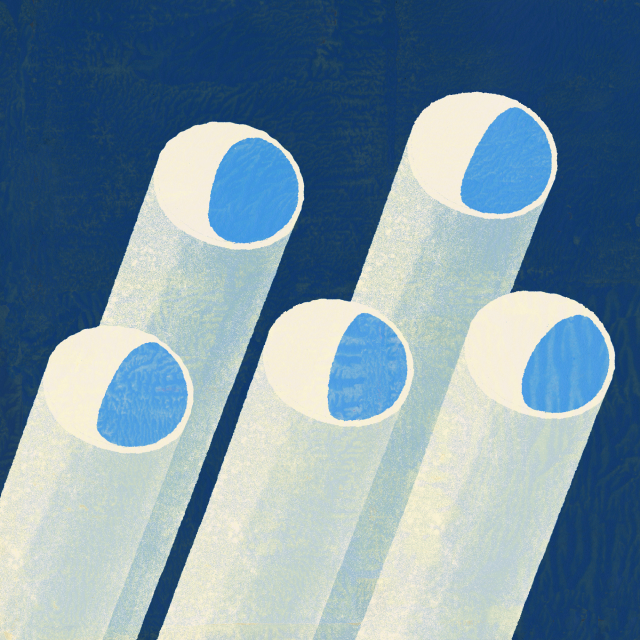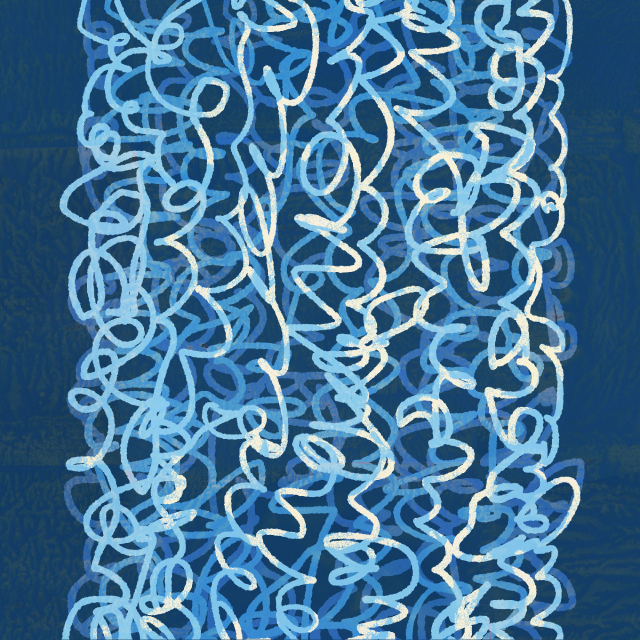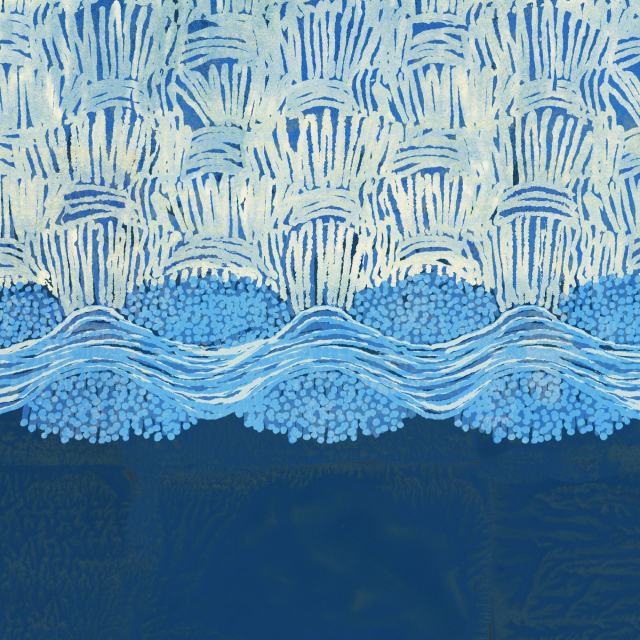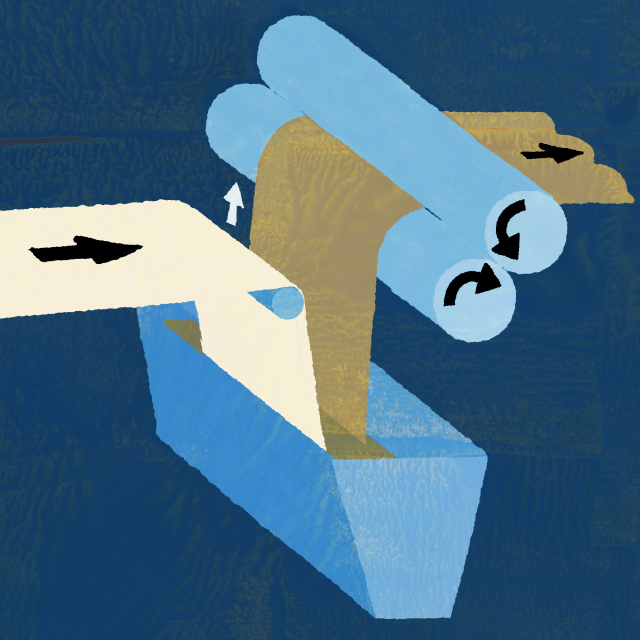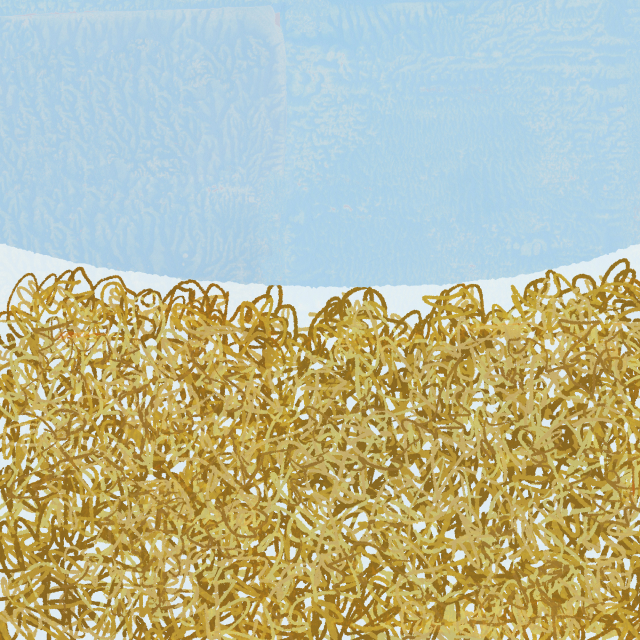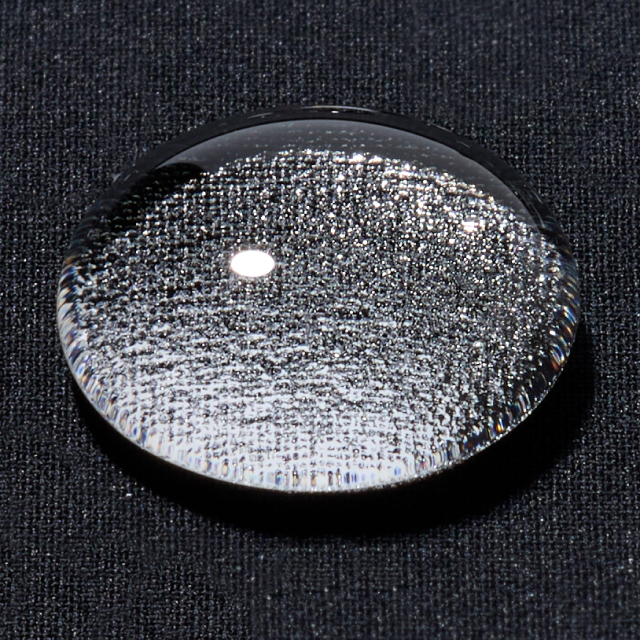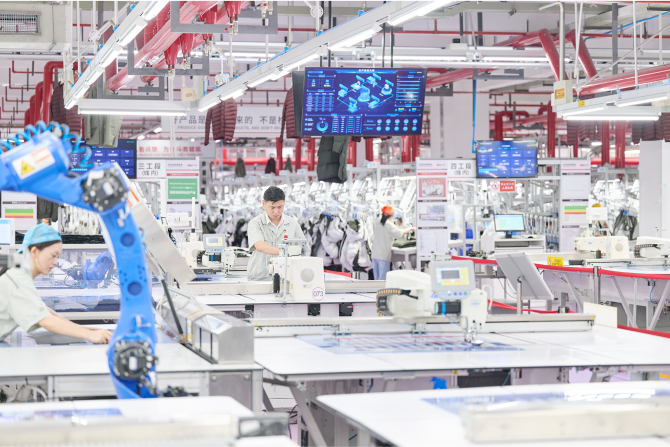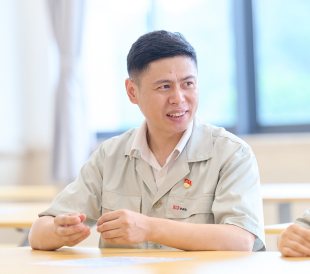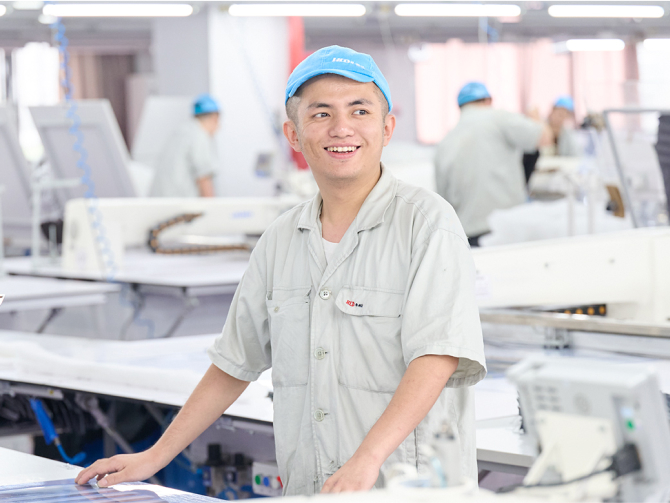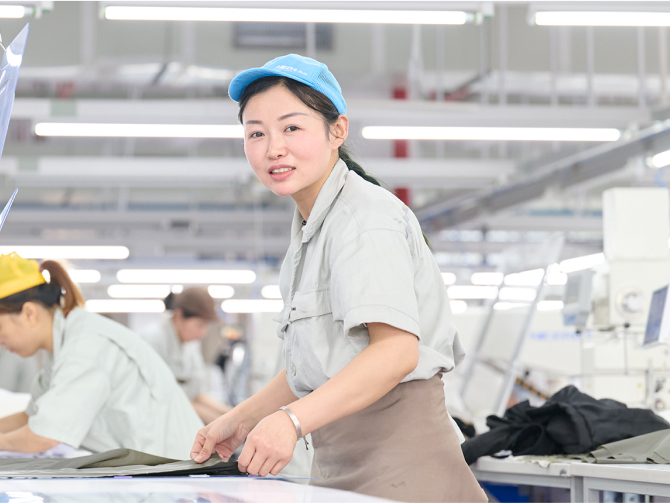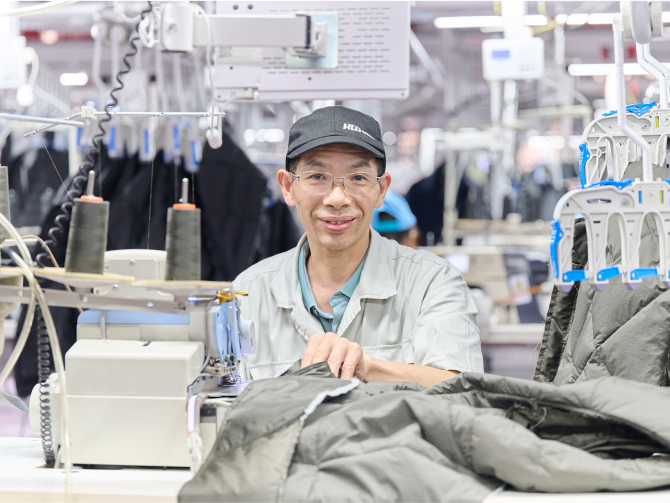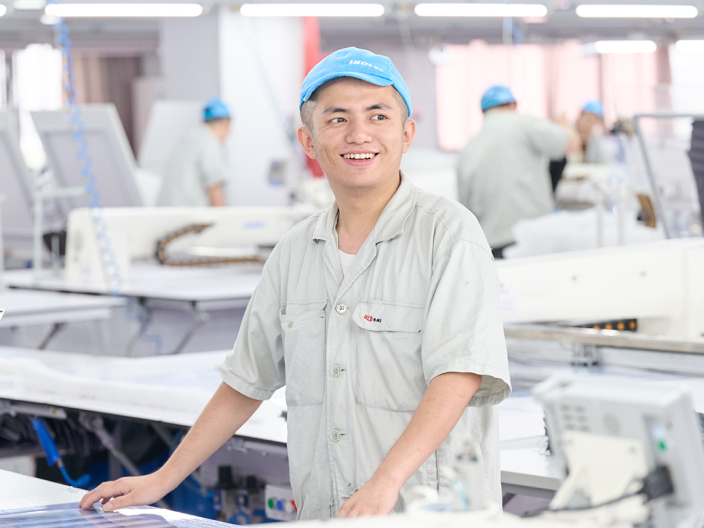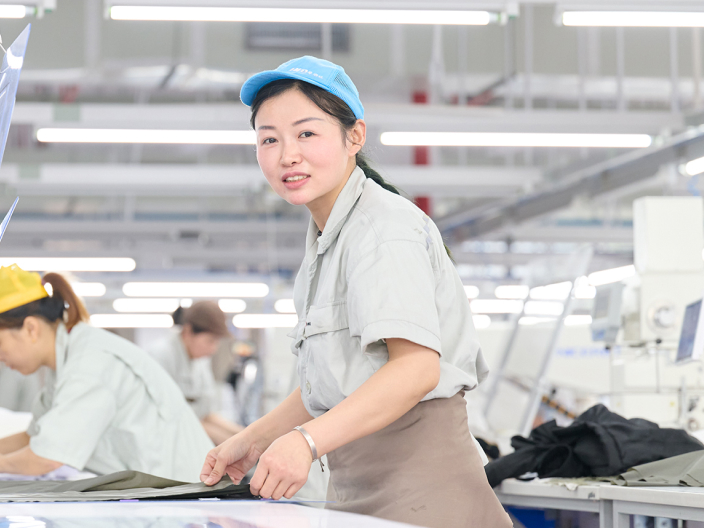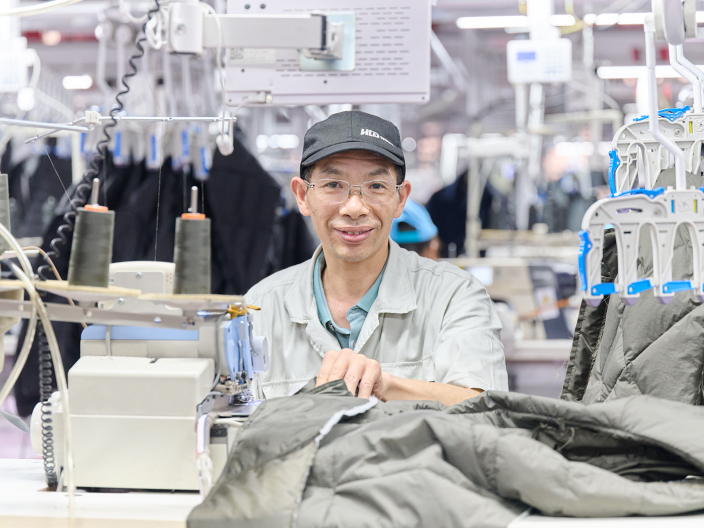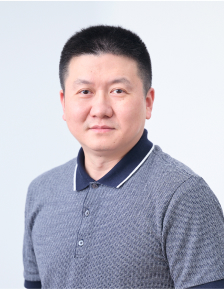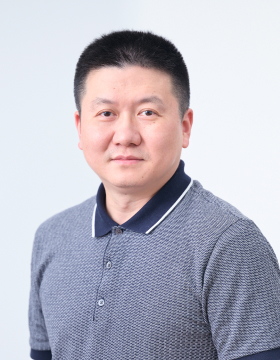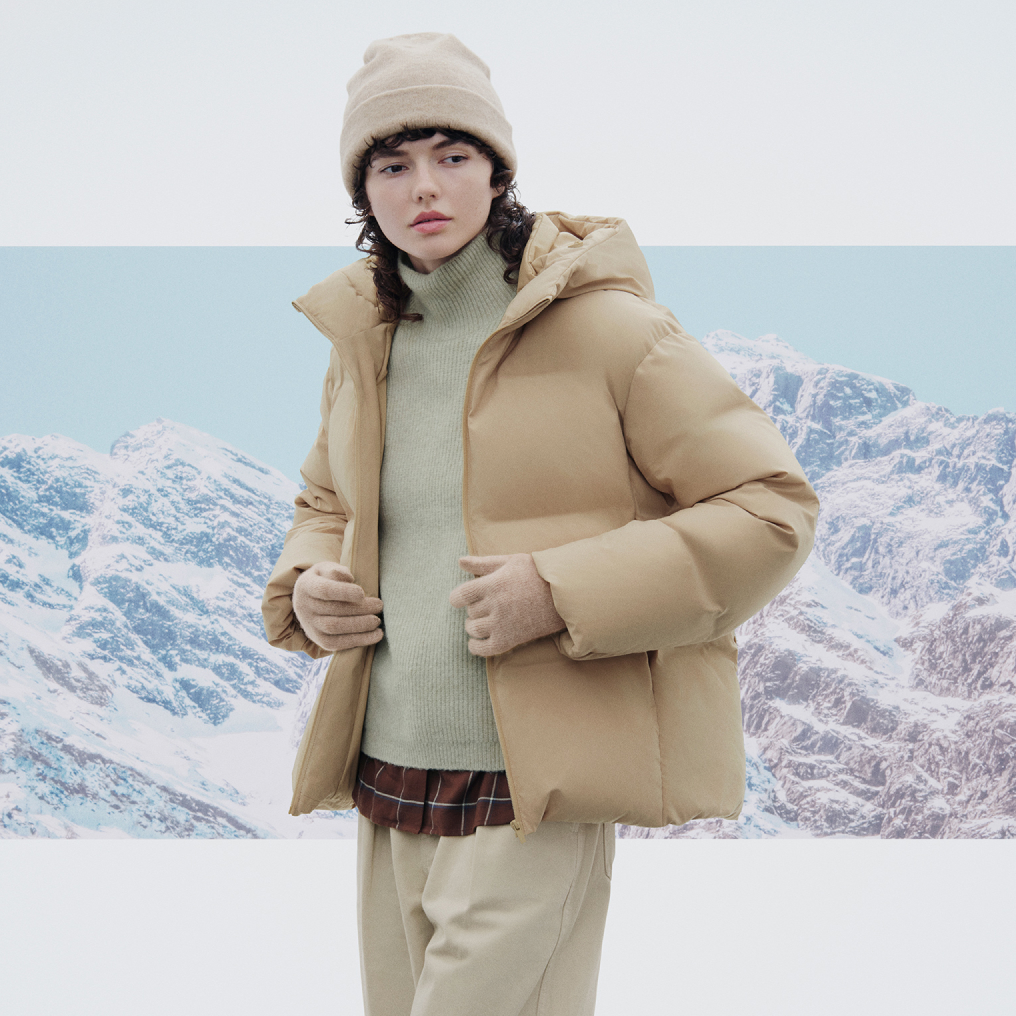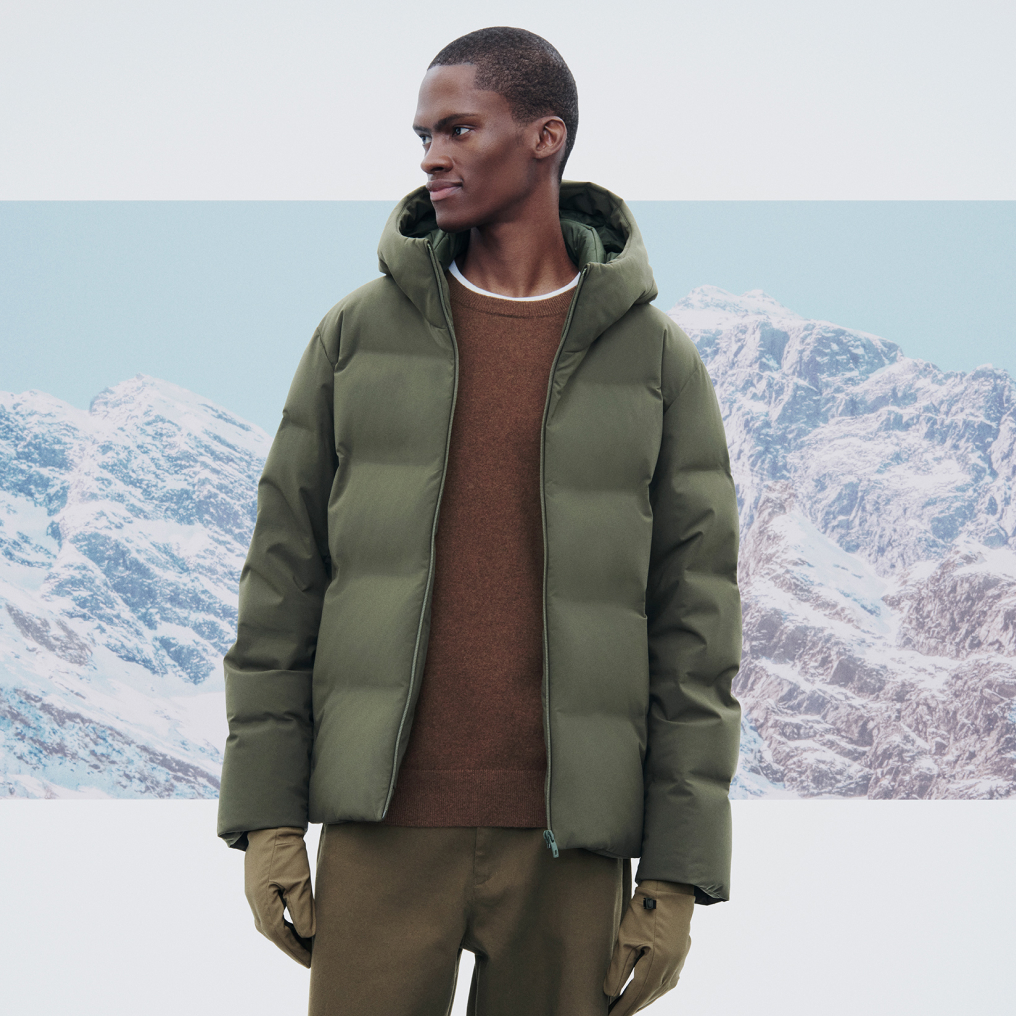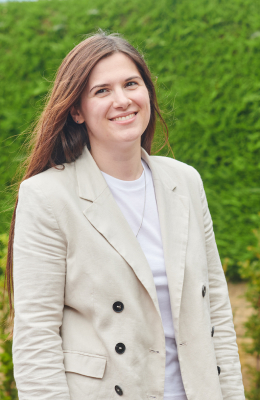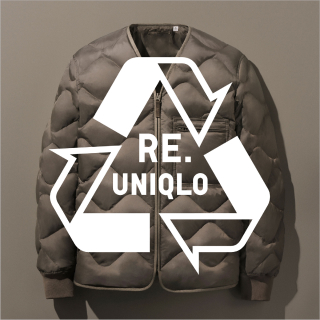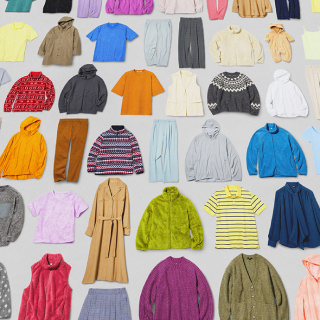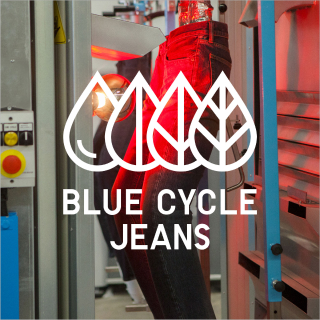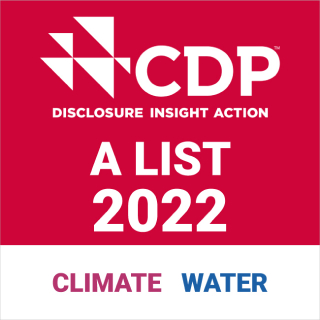
THE POWER OF
CLOTHING
November 2024 No.27
LifeWear that repels rain and keeps you comfortable, using safe materials.
Lotus leaves shed rainwater with ease. Rather than use PFAS or “forever chemicals,” LifeWear is made following nature’s example.
Illustrations by Tatsuro Kiuchi
All water-repellent UNIQLO products (outerwear, collapsible umbrellas, etc.) are made without the use of PFAS.

-
❶
What are PFAS?
-
❷
Increasingly Restricted Globally
-
❸
PFAS in Water and Oil Repellent Products
-
❹
2013: Taking Action
-
❺
2017: Phased Out
-
What are PFAS?
The term PFAS refers to certain organofluorine chemical compounds. PFAS has been used by industry to treat fabric surfaces because of its ability to shed water from rain and snow. Unfortunately, PFAS chemicals do not readily break down in nature. Once groundwater has been polluted, these chemicals are readily absorbed by people, which may lead to various health issues, according to international research institutions.
*Agents Classified by the IARC Monographs, Volumes 1–136
-
Increasingly Restricted Globally
Since it became known that PFAS pose danger to people and the environment, their use has been increasingly banned or regulated all over the world. In California, for instance, no textile products containing PFAS may be manufactured, distributed, or sold as of January 2025.
-
PFAS in Water and Oil Repellent Products
PFAS have historically been used in water-repellant coatings, frying pans, paints, and foam fire extinguishers because of their ability to shed water and oil. They’re often also found in industrial wastewater.
-
2013: Taking Action
In 2013, UNIQLO began taking steps to remove PFAS from all stages of production. Ever since, we’ve worked with textile makers, chemical manufacturers, and sewing facilities to develop new water-repellent items that don’t use PFAS. Trials are repeated until desirable results are achieved. Simply thickening water-repellent coatings isn’t the way, because it makes textiles rigid and can create scratchy surfaces. We arrived at a solution by examining the big picture, down to the threads and fibers of the fabrics, creating hundreds of samples as we continued our tests.
-
2017: Phased Out
Since the 2017 Fall & Winter season, UNIQLO has phased out the use of PFAS in all products. A large number of popular items feature water-repellent treatments, including winter outerwear filled with down and other insulations, functional outerwear like the BLOCKTECH parkas and pocketable parkas, bottoms like geared shorts and cozy pants, HEATTECH gloves, round mini shoulder bags, backpacks, collapsible umbrellas, and hats.
-
What are PFAS?
The term PFAS refers to certain organofluorine chemical compounds. PFAS has been used by industry to treat fabric surfaces because of its ability to shed water from rain and snow. Unfortunately, PFAS chemicals do not readily break down in nature. Once groundwater has been polluted, these chemicals are readily absorbed by people, which may lead to various health issues, according to international research institutions.
*Agents Classified by the IARC Monographs, Volumes 1–136
-
Increasingly Restricted Globally
Since it became known that PFAS pose danger to people and the environment, their use has been increasingly banned or regulated all over the world. In California, for instance, no textile products containing PFAS may be manufactured, distributed, or sold as of January 2025.
-
PFAS in Water and Oil Repellent Products
PFAS have historically been used in water-repellant coatings, frying pans, paints, and foam fire extinguishers because of their ability to shed water and oil. They’re often also found in industrial wastewater.
-
2013: Taking Action
In 2013, UNIQLO began taking steps to remove PFAS from all stages of production. Ever since, we’ve worked with textile makers, chemical manufacturers, and sewing facilities to develop new water-repellent items that don’t use PFAS. Trials are repeated until desirable results are achieved. Simply thickening water-repellent coatings isn’t the way, because it makes textiles rigid and can create scratchy surfaces. We arrived at a solution by examining the big picture, down to the threads and fibers of the fabrics, creating hundreds of samples as we continued our tests.
-
2017: Phased Out
Since the 2017 Fall & Winter season, UNIQLO has phased out the use of PFAS in all products. A large number of popular items feature water-repellent treatments, including winter outerwear filled with down and other insulations, functional outerwear like the BLOCKTECH parkas and pocketable parkas, bottoms like geared shorts and cozy pants, HEATTECH gloves, round mini shoulder bags, backpacks, collapsible umbrellas, and hats.
How do lotus leaves shed water droplets so effectively?
The tops of lotus leaves incorporate a waxy substance. When viewed under a microscope, these smooth surfaces are actually covered in tiny protrusions less than 1/100 of a millimeter tall. Tiny protrusions decrease the area of contact between a water droplet and the leaf, while air pockets between bumps support the droplets from below. This causes droplets to bead, so that the slightest tip or wobble of the leaf will send them rolling off the edge.
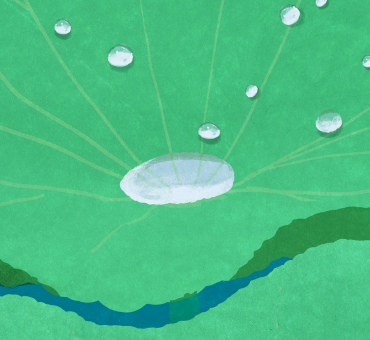
The latest Seamless Down boasts high water repellency
Our quest for water-repellent technologies that don’t use PFAS is ever-evolving. Released in 2024, Seamless Down sheds water in unexpected showers. Rain droplets bead and roll off the water-repellent material. What sort of new materials enable this high water-repellency? Let’s take a closer look at the workings of the latest seamless down.

Since launching in 2015, Seamless Down has perpetually evolved.
What makes these items different from other down jackets?
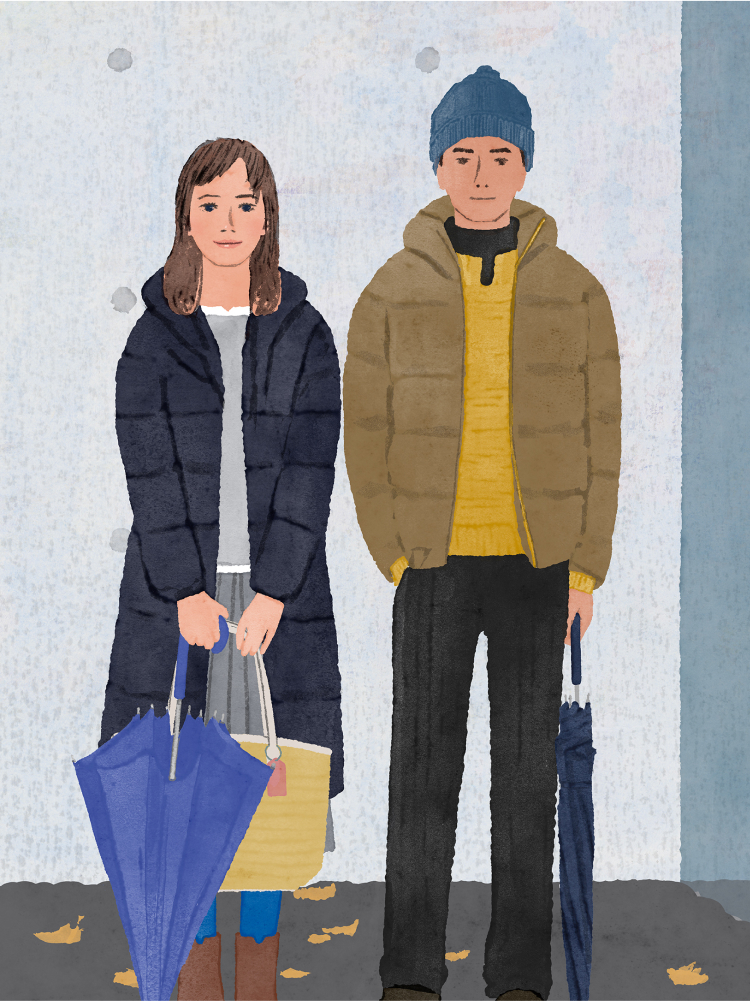
-
1
A big difference is the feathers are contained in blocks sealed using tape instead of stitching, using a process called thermo-compression bonding. Minimizing seams also makes it difficult for cold air and water to seep in, while also vastly reducing any loss of down.
-
2
Not just for the outdoors, seamless down can be worn casually out and about, or can be elevated with a suit or dress. Rich colors and textures combine with comfortable fits for an all-around sharp look.
-
3
UNIQLO uses down harvested from waterfowl raised in a responsible manner. Since the end of 2019, all partner factories producing down products are RDS (Responsible Down Standard) Certified.
-
4
The body (warmth) of a down item is measured using something called fill power. The higher the number, the greater the amount of air incorporated and the higher the quality. Seamless Down has a fill power of 750. For optimal warmth, the fill uses the golden rule of 90% down, 10% feathers.
-
5
The water-repellent finish is able to shed light rain and contains no PFAS chemicals. Woven from special threads developed through years of testing, the fabric has a water-repellent coating made to last.
-
6
When the time comes to purchase a new down item, please bring your old items to the store. Any returned items will be donated to those in need or recycled so that the down fill can be transformed into new UNIQLO products.
Creating water-repellent fabrics without PFAS posed a challenge. To mimic the structure of the lotus leaf, we took a new approach to making thread.
Synthetic threads are able to exhibit the functionality of natural fibers while responding to new needs and demands. By strictly controlling the shape of threads comprising disparate materials, a minutely textured surface much like a lotus leaf was achieved.
-


Fibers for women's Seamless Down are woven from resin using proprietary methods. From a magnified cross-section, you can see that each thread is actually a cluster of materials of one elasticity surrounded by material of a different elasticity.
-


By subjecting these clusters of fibers to a heating step, the thread is shrunken and looped, creating an effect much like a perm. This not only generates elasticity and body, it also gives fabrics woven from the thread an intricately textured surface.
-


Enlarged plan view of fabric. Fabrics woven from these newly developed threads have an intricately textured surface, giving them a water-repellency much like lotus leaves. Even the structure resembles the leaves.
-


The fabric is now dipped into the water-repellent chemicals. Because of the shrunken and looped fibers, the fabric has an intricately textured surface and a much larger surface area. This gives the water-repellent chemicals more space to adhere, increasing overall water repellency.
-


The effectiveness of the textured surface is reinforced by the thoroughly applied water-repellent treatment, creating a layer of air between the fabric and the water droplets that causes them to bead. A quick brush and the droplets fall away.
-


Photo of water droplets on the surface of seamless down fabric. The drops form bubbly beads due to the cushion of air between them and the fabric.
Since launch, our Seamless Down has been made at partner facilities with long track records of making UNIQLO outerwear. Next up, let’s take a look at the working environments of these factories, with a focus on the latest equipment and techniques.

-
The factories that make our Seamless Down use the latest technology and equipment to ensure the health and safety of the people who work there.
Join us on a tour of a partner factory in China that produces UNIQLO’s Seamless Down and hear from Vice President Li Haijiao and factory employees.
Photographs by Shinsuke Kamioka
-

-

An employee for nineteen years, Ji Xuefeng has thorough knowledge of all stages of the down production process and incorporates automation to increase quality and reduce burden on technicians.
Ji Xuefeng
Changzhou Hualida Garment Group Co., Ltd.
Using the latest technologies and equipment, the factory has improved manufacturing efficiency and quality while reducing the physical and mental burden on technicians. If workers feel more satisfied about their work environment, they’ll come to view their place of work with pride. Not a single loose thread on the floor, and if one were to fall, it’s picked up voluntarily—that’s a clear sign of workplace pride. Fulfilling weeks followed by weekends spent relaxing with the family. This balance is an essential part of life.
-

An employee for nineteen years, Ji Xuefeng has thorough knowledge of all stages of the down production process and incorporates automation to increase quality and reduce burden on technicians.
Ji Xuefeng
Changzhou Hualida Garment Group Co., Ltd. -
Using the latest technologies and equipment, the factory has improved manufacturing efficiency and quality while reducing the physical and mental burden on technicians. If workers feel more satisfied about their work environment, they’ll come to view their place of work with pride. Not a single loose thread on the floor, and if one were to fall, it’s picked up voluntarily—that’s a clear sign of workplace pride. Fulfilling weeks followed by weekends spent relaxing with the family. This balance is an essential part of life.
-

A clean and bright facility requires constant attention.
-

Clothes are shuttled automatically to the next step
-

Precise stitching is automated to lessen the burden on technicians.
-

Filling the down with remarkable precision using the latest equipment.
-

Automating the packing process frees up the hands of workers.
-

An automated sewing machine. Monitored by human hands.
-
A clean and bright facility requires constant attention.

-
Clothes are shuttled automatically to the next step

-
Precise stitching is automated to lessen the burden on technicians.

-

Filling the down with remarkable precision using the latest equipment.
-

Automating the packing process frees up the hands of workers.
-

An automated sewing machine. Monitored by human hands.
-
Making high-quality Seamless Down using a blend of automated processes and manual labor.

Li Haijiao
Vice President, Changzhou Hualida Garment Group Co., Ltd.
It takes 50 or so steps to make a T-shirt, but making Seamless Down takes around 200. To execute all of these steps, you need highly precise machinery.
Working off our experience making Ultra Light Down for UNIQLO, we started making Seamless Down in 2015. At this point, we possess a rich store of knowledge, experience, and skill. But since we know there’s still room for improvement, we turn to our staff for their proposals and opinions, which helps us always see what we do with a fresh set of eyes as we aim for increased quality.
Our company also produces lifesaving products like the airbags used in cars, earning us a strong reputation for quality, precision and durability that extends beyond the world of apparel.
-
Making high-quality Seamless Down using a blend of automated processes and manual labor.
Li Haijiao
Vice President, Changzhou Hualida Garment Group Co., Ltd.
-
It takes 50 or so steps to make a T-shirt, but making Seamless Down takes around 200. To execute all of these steps, you need highly precise machinery.
Working off our experience making Ultra Light Down for UNIQLO, we started making Seamless Down in 2015. At this point, we possess a rich store of knowledge, experience, and skill. But since we know there’s still room for improvement, we turn to our staff for their proposals and opinions, which helps us always see what we do with a fresh set of eyes as we aim for increased quality.
Our company also produces lifesaving products like the airbags used in cars, earning us a strong reputation for quality, precision and durability that extends beyond the world of apparel.
-
Improving work environment through the latest technologies and equipment
Sustainability is central to the manufacture of all UNIQLO products. By establishing and sharing concrete goals for improving work environments, reducing CO2 emissions, and using recycled materials, incremental improvements have been made nearly every year.
One initiative that reduces strain on workers and increases efficiency is the introduction of equipment using the latest technology. For example, all you have to do is scan a pattern and the digitally controlled automated cutting machines can cut fabric with a high degree of precision. This work was previously all done by hand.
Up until about fifteen years ago, down was stuffed into the products by hand as well. At the end of the day, workers would be covered in feathers. Thanks to the introduction of specialized filling machines, the work is executed with greater precision and efficiency, improving the factory atmosphere for all. Loss per item is now less than 0.01 grams of down. The machines are always being updated to make use of the latest technology.
Ensuring steady employment
A key issue in the apparel world is navigating the slumps and rushes caused by the seasonal collection cycle. For a factory like ours specializing in outerwear, a slower period in the spring and summer is unavoidable. For years, we’ve been working on ways to ensure a steady stream of orders throughout the year.
Using the latest technology and equipment has gone a long way toward fulfilling this goal. That’s because these machines are able to take on more difficult tasks, allowing us to produce a wider array of products. This is part of how we’re working to ensure steady employment throughout the year.
-
Machines made for Seamless Down
Water-repellent finishes that don’t use fluorine are vulnerable to oils. Seamless down uses blocks that hold the down inside thanks to a containment process called thermo-compression bonding. This means there are no seams around the blocks, but sewing machines are still needed to assemble all the pieces.
To avoid any adverse reaction from stray flecks of machine lubricant, these items are made using special machines that require almost no oiling. Even the thread has been specially developed for Seamless Down products.
Workers mean everything to us
UNIQLO products are sold all over the world. The item a customer picks up in one store has to be the exact same quality in all the stores all over the world. Variation is out of the question. Maintaining a high standard of quality is what keeps a global brand alive.
As mentioned earlier, it takes over 200 steps to make a seamless down product. Ahead of the thermo-compression bonding step, for example, it’s of great importance that the parts be manually prepared by human hands. A worker’s eyes and other senses are essential to maintaining quality throughout the production process. For the time being, inspection is best left to people.
Rather than automate everything, it’s important to have people look things over to ensure a quality final product. This is one of the things we’re most proud of as a manufacturer.
Workers mean everything to us. Their value is what guides us as the factory continually evolves into an ever-more efficient and productive facility.
Made by people, made for people—working toward a richer and more vibrant life for all.
UNIQLO’s clothing is produced mainly at a handful of partner factories in Asia. These relationships depend on robust dialogue throughout the production process, whether it’s ensuring the health, safety and rights of the employees, monitoring product quality, monitoring product quality, or evaluating the terms of the account. It’s about fostering an environment where a diverse group of employees can thrive and make good clothes. By good clothing, we mean simple, safe, high-quality clothing that is built to last and improve your life. As a clothing business, we’re focused on continually establishing new standards and raising the bar for quality across the industry, setting an example for sustainable development.
Less seams. More warmth.
Seamless Down
BACK ISSUE

June 2024 No.26
Finding safety and a new life in far-away Japan.
Originally from the Democratic Republic of the Congo, Masamba now works at UNIQLO GINZA.
READ MORE
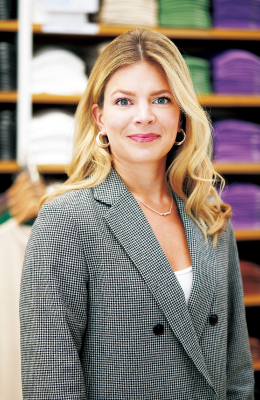
October 2023 No.25
The Most Beloved Brand in Scandinavia
Nikolina Johnston, the force behind UNIQLO’s first store in Stockholm, was once a right winger on the soccer field.
READ MORE
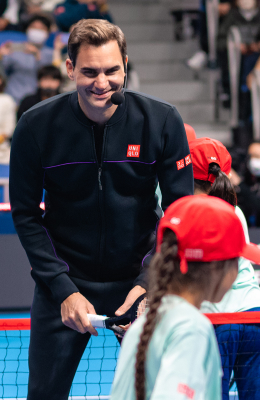
January 2023 No.24
Empowering Children to Build Their Future
Tennis legend Roger Federer and Tadashi Yanai discussed the importance of helping kids.
READ MORE





